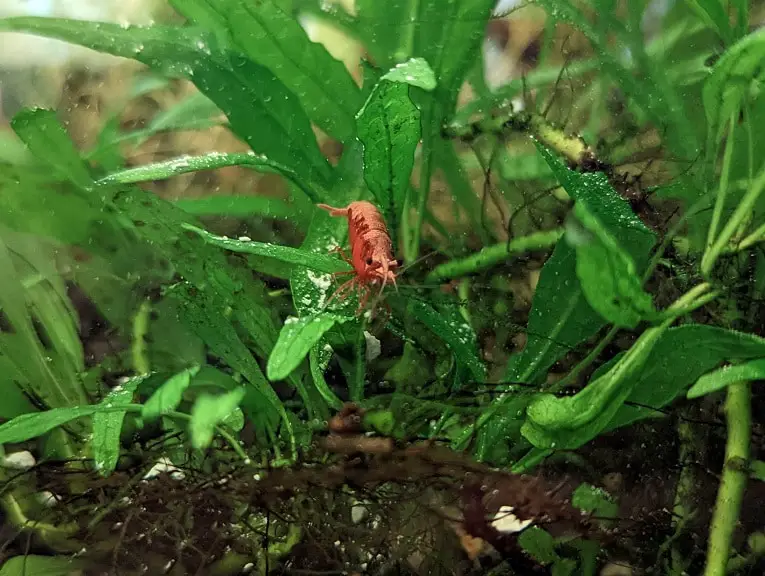Neocaridina Shrimps, also known as Cherry Shrimps, aren’t compatible with a lot of fish species in the aquarium hobby as they are often seen as snacks by tank mates.
The Cory Catfish species, however, should be docile enough to live peacefully with your shrimps as long as you set up your fish tank correctly and take extra precaution when feeding. To find out what precautions you should take in order to hose Shrimps with Cory Cats, you can take a look at this guide from Aquarium Blueprints.
Setting up a tank for Cherry Shrimps and Cory Catfish
When setting up a tank for your Cherry Shrimps and Cory Catfish, we recommend that you do the following:
1. To start off, we suggest using sand as a substrate. Your Cory Cats will love digging their heads into the sand. Other substrates may be too rough, which may end up damaging their whiskers.
In terms of how much substrate you should be using, we recommend that the sand should be at least 2 inches deep. The deeper the substrate is, the better it will be for the biological filtration in your tank as the beneficial bacteria will help remove the ammonia, nitrite and nitrates from the water column.
2. We recommend adding live plants in the tank as they will provide a lot of hiding places for your Cherry Shrimps. Not to mention that plants will help reduce the toxic ammonia and nitrates from your tank water.
For our tanks, we use Java Fern and Java Moss. Both of these plants don’t need an fish tank light to grow and can survive easily enough on ambient room lighting.

3. You should also build a rock pile with many small openings. By doing so, you will give your Cherries plenty of places to hide if they need to look for a safe space to molt.
4. When it comes to filters, we highly recommend using a sponge filter. With power and canister filters, you risk sucking in smaller size Cherry Shrimps.
Not to mention that shrimps and Cory Catfish both have low bio loads as not a lot of wastes are being produced. Therefore, a sponge filter should get the job done when it comes to mechanical and biological filtration.

5. When it comes to the temperature range, you should set your heater to 74° F. At that range, your Cherry Shrimps should have no problem reproducing while your Cory Cats will feel comfortable (and may eventually even start breeding on their own as well).
6. For the other water parameters, we suggest that you target the following ranges:
- 7.0 pH to 7.5 pH
- 7 GH to 15 GH
- 2 KH to 8 KH
At those ranges, both your Cherries and Cory Cats should be able to live healthily.
How to prevent Cory Catfish from eating Cherry Shrimps
Based on our experience, our Albino Cory Catfish (Corydoras Aeneus) do not actively hunt or attack our Red Cherry Shrimps. With that said, they could accidentally swallow smaller sized shrimps by during feeding time.
To prevent this from happening, we recommend that you spread your food all over the tank during feeding time. If you have built a rock pile in your tank like we previously suggested, then you can drop some food on the rock pile for your shrimp as your Cory Catfish are more likely to look for food at the bottom of the tank.
Furthermore, you can also try using a product such as Bacter AE, which will grow biofilm all over the tank. As a result, your baby Cherry Shrimps won’t need to seek out any additional food source.
